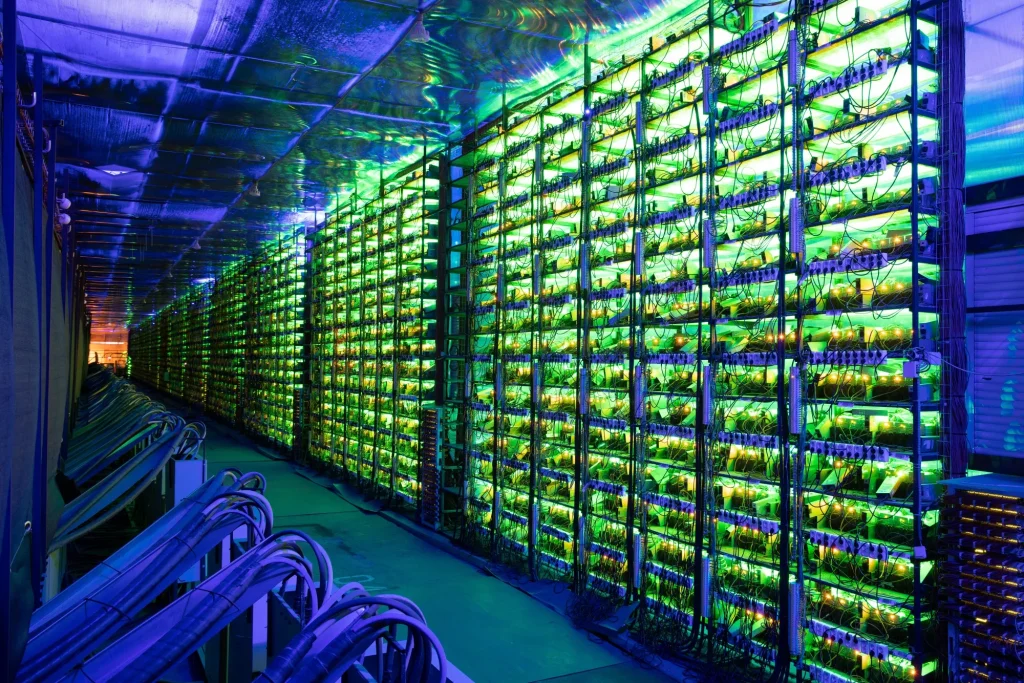As the demand for Bitcoin continues to rise, so does the need for powerful and efficient facilities to support its production. A Bitcoin mining center is where the magic of cryptocurrency creation happens, using high-performance computers and complex algorithms to validate transactions on the Bitcoin network. But these centers are more than just rooms full of hardware—they are the backbone of the decentralized world of Bitcoin, playing a critical role in maintaining the security and reliability of the entire system. In this article, we will dive into the fascinating world of Bitcoin mining centers, exploring how they operate, the technology behind them, and their broader impact on the economy and environment.
The Role of Bitcoin Mining Centers in the Blockchain Network
Bitcoin mining centers serve as the processing hubs for verifying and adding transactions to the blockchain. When a transaction is made, it needs to be validated and added to a block, which is then linked to the previous block, forming a chain. This process, known as mining, requires solving complex mathematical puzzles—a task only possible with significant computational power. Mining centers, equipped with specialized hardware like ASICs (Application-Specific Integrated Circuits), perform these tasks continuously, ensuring the security and efficiency of the Bitcoin network.
Functions of Bitcoin Mining Centers
- Transaction Verification: Ensuring that all transactions are legitimate and comply with network protocols.
- Block Creation: Adding verified transactions to the blockchain in a secure and immutable manner.
These centers are not only crucial for confirming transactions, but they also maintain the decentralized nature of Bitcoin. Unlike traditional financial systems that rely on central banks or institutions, Bitcoin’s blockchain is maintained by a global network of miners. Every time a miner successfully solves a puzzle and validates a block, they are rewarded with newly minted Bitcoin. This incentive structure keeps the network decentralized and prevents any single entity from controlling the blockchain, making mining centers fundamental to the overall health of the system.

The Technology and Infrastructure Behind Mining Centers
A typical Bitcoin mining center is a highly specialized facility filled with rows of servers, each dedicated to the sole task of solving cryptographic puzzles. These centers are usually equipped with thousands of mining rigs, such as ASICs, that are optimized for Bitcoin mining. The sheer scale of these operations means that they consume enormous amounts of electricity and generate a significant amount of heat, which is why mining centers are often located in regions with cheap electricity and cool climates to minimize costs.
Components of a Bitcoin Mining Center
| Component | Description |
|---|---|
| Mining Rigs | Specialized hardware (ASICs) designed to perform calculations for mining. |
| Cooling Systems | Infrastructure to manage heat generated by mining operations. |
| Power Supply | Reliable energy sources, often from renewable sources, to minimize costs. |
| Networking Equipment | High-speed internet connections to ensure efficient data processing. |
However, the infrastructure behind a mining center goes beyond just computers. Many large-scale operations are housed in industrial complexes, with dedicated cooling systems to prevent overheating and high-speed internet connections to ensure data processing occurs without delay. In recent years, some mining centers have turned to renewable energy sources, such as hydroelectric or solar power, to make their operations more environmentally sustainable. This shift not only reduces costs but also addresses concerns about the environmental impact of Bitcoin mining, which has been a growing topic of debate globally.
The Economic and Environmental Impact of Bitcoin Mining Centers
Bitcoin mining centers are not just technological marvels—they also have a significant economic impact. In regions where electricity is cheap and abundant, mining centers can create jobs and stimulate local economies. For example, countries like Iceland and Canada have become hotspots for mining operations due to their favorable climate and access to renewable energy sources. The influx of mining centers has contributed to the development of infrastructure and provided opportunities for skilled workers in these areas.

Economic Contributions
- Job Creation: Mining centers require skilled labor, thus providing job opportunities in various sectors.
- Infrastructure Development: Increased demand for electricity and connectivity can lead to improved local infrastructure.
However, the environmental impact of mining centers cannot be ignored. Due to their high energy consumption, Bitcoin mining has been criticized for its carbon footprint. According to some estimates, the total energy consumed by the Bitcoin network rivals that of small countries. This has prompted both governments and companies to seek solutions that reduce the environmental strain, such as moving to greener energy sources or improving the energy efficiency of mining hardware. As the world becomes more conscious of its environmental footprint, the future of mining centers will likely depend on how well they can balance profitability with sustainability.
Environmental Concerns
| Impact | Description |
|---|---|
| Energy Consumption | High levels of electricity usage leading to concerns about sustainability. |
| Carbon Footprint | Significant emissions due to reliance on fossil fuels in some regions. |
| Ecosystem Disruption | Potential impact on local ecosystems from large-scale operations. |
Sustainable Practices
- Renewable Energy: Use of wind, solar, and hydroelectric power to reduce carbon emissions.
- Energy Efficiency: Investing in advanced hardware that consumes less power while maintaining performance.
Bitcoin mining centers are at the heart of the cryptocurrency ecosystem, enabling the continuous production and validation of Bitcoin transactions. As the demand for Bitcoin grows and mining becomes increasingly competitive, these centers will need to innovate to remain profitable and environmentally sustainable. Whether by adopting renewable energy, improving efficiency, or scaling operations, the evolution of Bitcoin mining centers will play a key role in shaping the future of the cryptocurrency market. While challenges remain, including regulatory pressures and environmental concerns, the mining center remains a critical pillar in the world of Bitcoin—one that is constantly adapting to meet the demands of the ever-changing digital landscape.
References
- Cointelegraph – this site provides up-to-date articles on Bitcoin mining, covering topics such as mining efficiency, market volatility, and the performance of mining companies.
- The Texas Tribune – this article examines the implications of Bitcoin mining on Texas’s energy grid, highlighting the challenges and opportunities presented by the growing demand from mining facilities.


